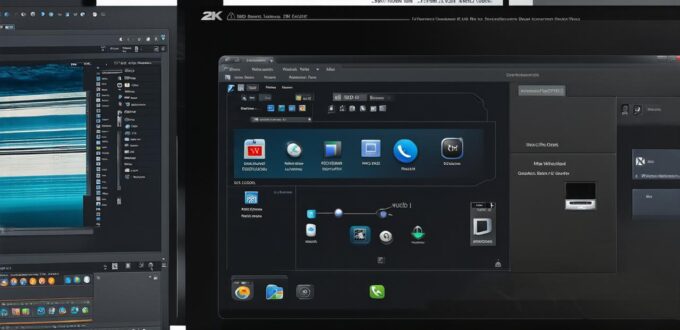As a software developer, it’s important to understand the differences between application software and system software. Both are crucial components of modern computing systems, but they have distinct roles and features.
Introduction: What is Application Software?
Application software refers to programs designed for specific tasks or purposes. These programs are created for end-users and run on top of the operating system, utilizing its resources and features to perform their functions. Some examples of application software include Microsoft Office, Photoshop, and Google Chrome.
Application software is typically developed for a particular platform or operating system, such as Windows, Mac OS, or Linux. It can be installed directly on the user’s computer or accessed through the internet via web browsers or cloud-based services. Application software is designed to provide users with specific tools and features that help them complete tasks quickly and efficiently.
One of the primary benefits of application software is its ability to automate repetitive tasks, saving time and reducing the risk of errors. Additionally, application software can be customized to meet the needs of individual users or organizations, making it a valuable tool for productivity and creativity.

What is System Software?
System software refers to programs that manage and control the computer’s hardware resources, as well as providing common services for application software. These programs are responsible for managing the operating system’s core functions, such as memory management, process scheduling, and device drivers. Some examples of system software include Microsoft Windows, macOS, and Linux.
System software is typically developed by the manufacturer of the computer’s operating system and is tightly integrated with the operating system itself. It cannot be installed or uninstalled like application software, as it is an integral part of the operating system’s functionality.
One of the primary benefits of system software is its ability to manage the computer’s resources efficiently and effectively, ensuring that all applications run smoothly and without conflicts. Additionally, system software provides a consistent interface for users to interact with the computer’s hardware and software components, making it easier to use and maintain.
The Role of System Software in Managing Application Software
System software plays a crucial role in managing application software by providing the necessary infrastructure and services for them to run efficiently and effectively. Some of the key ways system software manages application software include:
- Memory management: System software is responsible for allocating and deallocating memory space for applications, ensuring that they have access to the resources they need to run smoothly.
- Process scheduling: System software manages the execution of processes by scheduling them in a way that maximizes system efficiency and minimizes conflicts between applications.
- Device drivers: System software provides an interface between the operating system and the computer’s hardware devices, allowing applications to communicate with the hardware components they need to function properly.
- Security and authentication: System software is responsible for managing security features such as firewalls, antivirus software, and user authentication, ensuring that the computer and its data are protected from unauthorized access.
- File management: System software manages the file system, allowing applications to store, retrieve, and manipulate files and folders on the computer’s hard drive or other storage devices.
Case Study: Microsoft Office as an Application Software
Microsoft Office is a prime example of application software that runs on top of the operating system’s resources. It provides users with a suite of tools for word processing, spreadsheets, presentations, and more.
The Role of System Software in Managing Microsoft Office
Microsoft Office relies heavily on system software to function properly. Some of the key ways system software manages Microsoft Office include:
- Memory management: System software allocates memory space for Microsoft Office applications, ensuring that they have access to the resources they need to run smoothly.
- Process scheduling: System software manages the execution of Microsoft Office processes, scheduling them in a way that maximizes system efficiency and minimizes conflicts between applications.
- Device drivers: System software provides an interface between the operating system and the computer’s hardware devices, allowing Microsoft Office to communicate with the hardware components it needs to function properly.
- Security and authentication: System software manages security features such as firewalls, antivirus software, and user authentication, ensuring that the computer and its data are protected from unauthorized access.
- File management: System software manages the file system, allowing Microsoft Office to store, retrieve, and manipulate files and folders on the computer’s hard drive or other storage devices.
Conclusion: The Importance of Understanding Application Software and System Software
In conclusion, understanding the differences between application software and system software is crucial for any software developer. By recognizing their distinct roles and features, developers can create programs that are more efficient, effective, and user-friendly.
